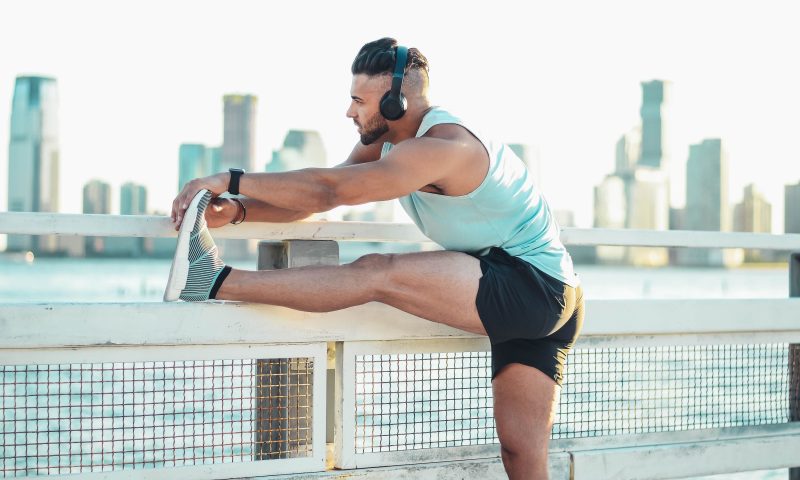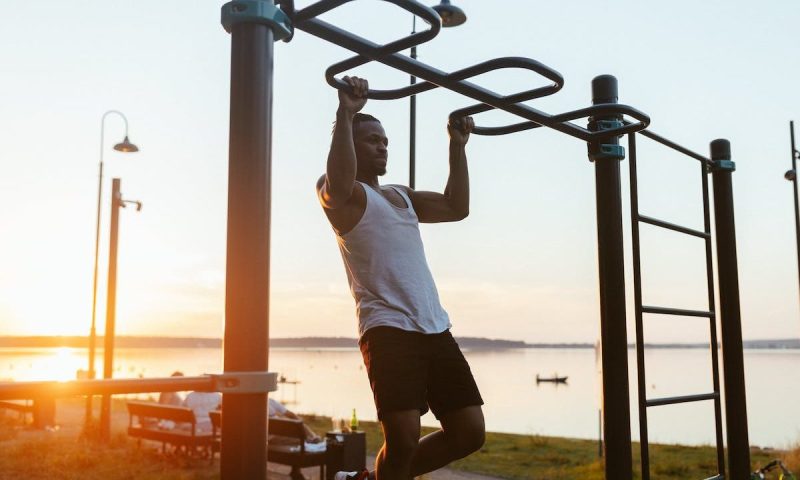As you prepare to start your summertime fitness routine, you’ll want to include functional training. Now more than ever, there’s an increased focus on this type of training within the fitness-conscious world, and with good reason; functional training primes your body for your everyday activities.
As we go on with the hustle and bustle of our day, we often overlook it, but functional training provides the strength to carry out the daily tasks that require you to push, haul, load, and lift. Keep reading to learn more about functional training and how to include it in your routine.
Does functional training build strength?

Engaging in functional fitness is a great way to build strength. This type of training encourages growth in muscle mass, endurance, and the ability to develop power in your movements.
Different patterns are involved, like squats, deadlifts, and pull-ups. These common exercises will give you the strength and stamina needed to complete routine tasks like reaching down to pick up an object without getting injured or winded. Working on your core and enhancing your stability results in gains in your overall strength, which is necessary for most functional movements.
For these reasons, many functional fitness workouts have been adapted, like rucking or carrying several pounds within a heavy backpack. This exercise gets your body acclimated to lifting and supporting a heavy load. It is also the determining factor for what qualifies as functional fitness, as the goal is action-based instead of the aesthetic outcome of a ripped body.
A bench press or overhead squat isn’t a typical movement you would perform throughout the day. However, a day rarely goes by that you won’t carry something.
Is functional training good for mobility?

Functional training can help boost your mobility. Functional training utilizes multi-joint movements that benefit your flexibility and agility, and some exercises, like running, may improve your speed. Each of these aspects is vital for sustaining athletic activities as well.
Functional movements like the sit-and-reach will be advantageous for postural control and the ability to twist and turn your trunk in seated positions. Exercising regularly can boost functionality and reduce stiffness or back pain that may result from prolonged sitting.
You will likely see the positive results of upgrading your mobility as daily tasks become easier to execute. Consistent utilization of these workouts can help your connective tissue grow stronger and reduce your risk of injury. This means you will feel less tension over time as you carry out your exercises. Also, the freer range of motion could make your movements feel as light as air, and you’ll adapt easier to more advanced regimens.
Fundamental exercises of functional fitness

Upper body
Maintaining a functional upper body is key to natural movements, like embracing your loved ones or opening and closing doors. Push-ups and curling exercises are useful here, as stronger arm muscles can carry you a long way. Also, note that performing some bodyweight exercises can help with developing your functional strength.
Some classic upper-body workouts can be great for functional fitness. One such workout is the bicep curl. For this workout, you’ll hold a dumbbell in each hand with your elbows positioned at your side, lift the weights up toward your shoulders, and then lower the weight back down.
Another workout is the bent-over row, which requires you to stand behind your barbell with your feet apart, bent at your hips with a straightened back and bent knees. You’d then bring the barbell up to your chest, challenging your back muscles, before lowering it back to the floor.
In addition to essentials like push-ups and pull-ups, variations of shoulder presses can prepare you for activities like hoisting an object overhead. This is also pertinent for sustaining activities like hair washing that require arm strength, and you won’t grow tired as you do it.
Lower body
The strength and flexibility of your lower body are integral to your overall functionality. Running or jumping rope and calf workouts are beneficial due to the working out and stretching of your joints. This will allow you to walk or run for long distances without cramping or growing tired.
Also, variations of lunges will enable you to climb those stairs with your hands full or without getting winded. Doing squat calf raises can help you fully develop your lower legs as well. Do these on a stair set in a half-squat, with your heels hanging off the edge of the stair, holding onto something for balance if necessary. You’ll raise slowly and pause, then lower with control to complete the stretch.
Lower body strength can lead to supported upright posture and circulation. Your legs are home to some of the largest muscles in the body, so training them helps to keep oxygen flowing smoothly. Try deadlifts, which entail lifting a weight from the ground and bringing it to waist level with your core engaged and hips and knees bent. This ensures you can pick items up from the floor while maintaining proper balance. For many movements, leg strength is key to keeping your body stabilized.
Additionally, your lower body development isn’t complete without attention to your hips. The hip is one of the largest joints in the body, and the flexibility and mobility of your hips have a prominent role in your ability to stand up or sit down, climb stairs, run, jump, and squat. Such workouts include the forward leg hip swings, which come in handy if you play kickball with your kids or if you’ve ever had to close the door behind you with your foot. You can also try doing high knees and lateral step-ups to keep your hips flexible and strong.
Example functional fitness workout routine

Your functional fitness workout routine will set the foundation for your physical strength that will allow you to have sharper abilities in sports and athletics. Mirroring your real-life activities allows you to put flexibility and endurance to good use during routine tasks while also building your strength and balance, enhancing your coordination and wellness, and preventing injuries from common activities.
Below, we have provided an example of a workout routine you could do weekly for great results.
Day 1: Upper body
- Pull-ups: 4 sets x 8-12 reps
- Push-ups: 3 sets x 12-15 reps
- Bent-over rows: 3 sets x 10-12 reps
- Overhead shoulder presses: 3 sets x 12-15 reps
- Bicep curls: 2 sets x 8-12 reps
Day 2: Lower body
- Forward leg swings: 2 sets x 15 reps
- High knees: 2 sets x 15 reps
- Deadlifts: 4-5 sets x 6-8 reps
- Lunges: 3-4 sets x 12-15 reps
- Squat calf raises: 3 sets x 15 reps
Day 3: Full body
- Kettlebell swings: 2 sets x 12-15 reps
- Single-arm farmer’s carry: 2 sets x 12-15 reps
- Dumbbell reverse lunges: 3 sets x 10-12 reps
- Lateral toe taps with resistance band: 2 sets x 10 reps
- Wall sits: 3 sets x 30 seconds




